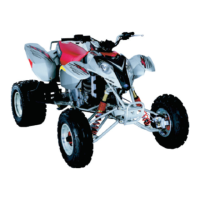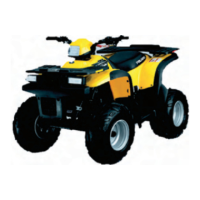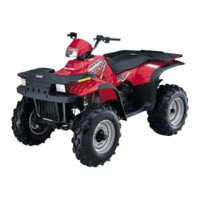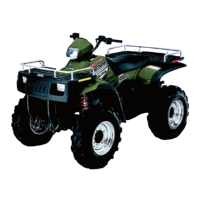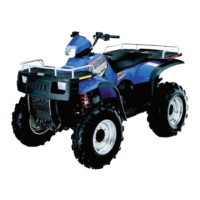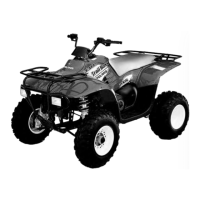STEERING / FRONT SUSPENSION
6.18
Toe Adjustment, All Models
Toe adjustment on all models must be performed with the
vehicle weight on the suspension, at Normal Ride Height.
1. Make sure the track is properly aligned. This will be
used as a reference point for toe out measurement.
2. To obtain normal ride height of the front suspension,
lift the front end 3--5” with the front bumper. Slightly
compress the front bumper several times, working
the suspension and front skis until an average is
obtained.
NOTE: To prevent carbide skags from grabbing, make
sure the surface under the skis will allow full side-to-side
movement. Avoid rough concrete, asphalt, or carpet
which may cause carbide skags to grab or catch and
restrict movement.
SERVICE HINT: Before final measurement is taken,
skis should be pushed together lightly at the tips to re-
move play in the steering components. This will help
achieve accurate measurement. If a strap is used be
sure it is not
too tight
or it will alter measurement (this is
most important on models with composite skis).
Lift 3-5s (7.6-12.7 cm) and work
suspension to find average
Toe Adjustment
Normal Ride Height
Incorrect Correct
Tie Rod End
Mounting
Surface
Support
Edge
Radius Rod End Jam Nut Torque -
8-14 ft. lbs. (11-19 Nm)
Straight
Edge
A
B
10s
10s
NOTE: Measurements A&B should be
taken 10s (254 mm) from center of ski
spindle.
“A” 1/8-1/4s greater than
“B” at normal ride height
Track
Skag
Centerline
Measurement “A” should be 1/8s -1/4s
(3.17 - 6.35 mm) greater than measure-
ment “B” at normal ride height.
Toe Alignment: All Models
Enfocus Software - Customer Support
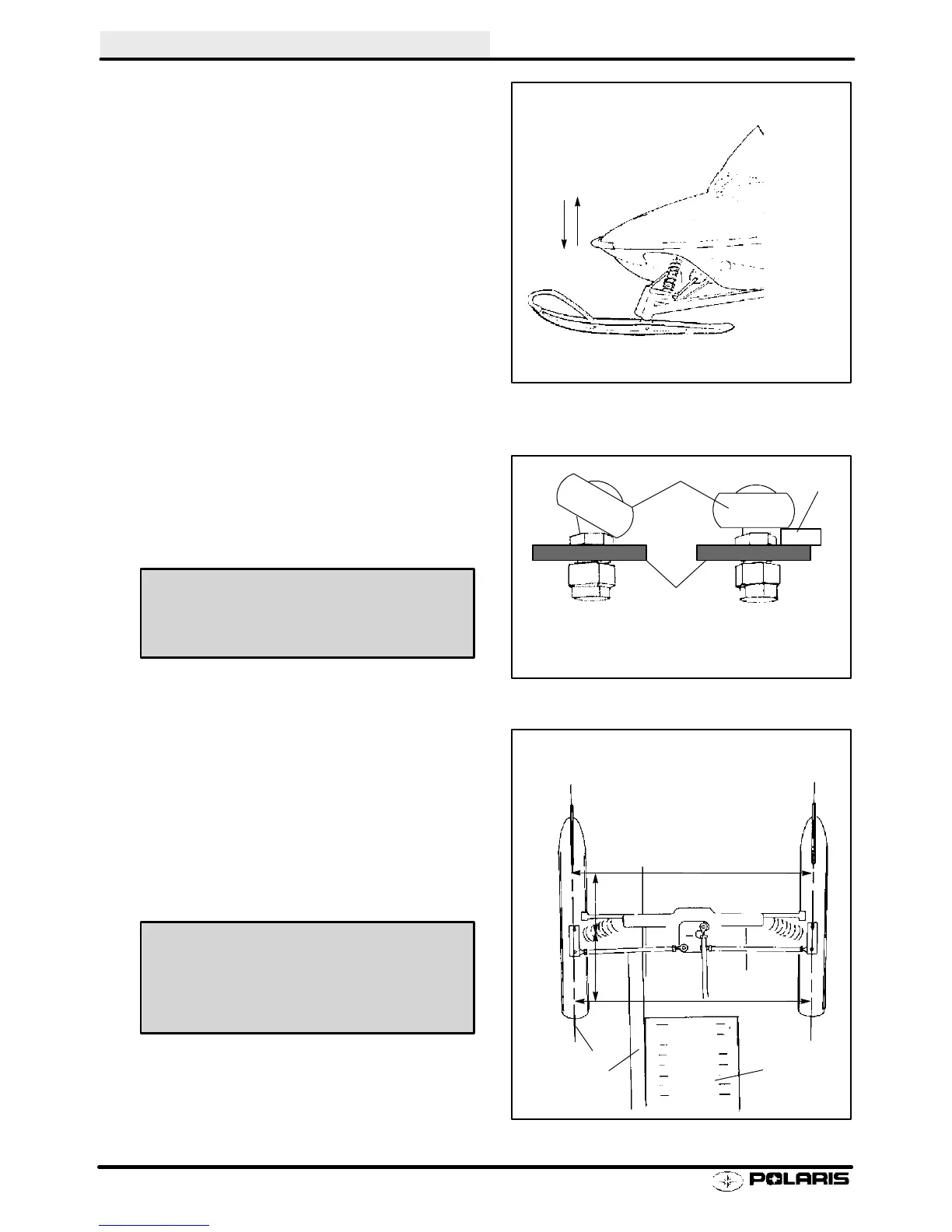